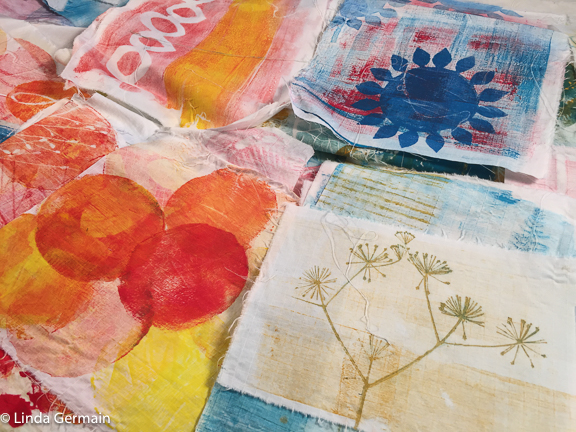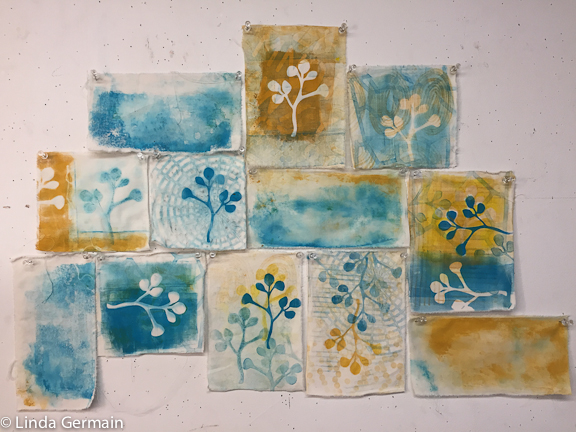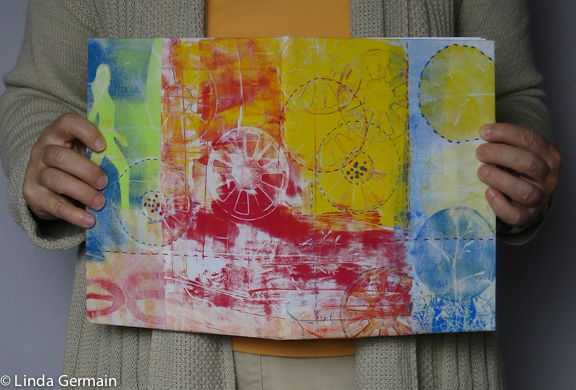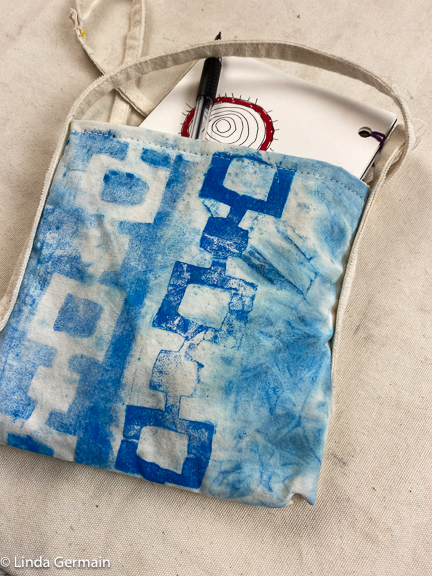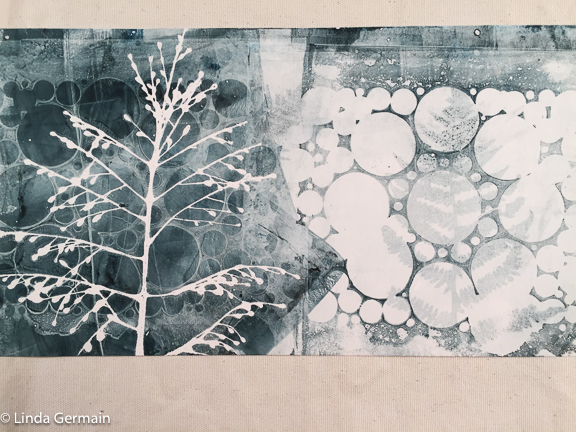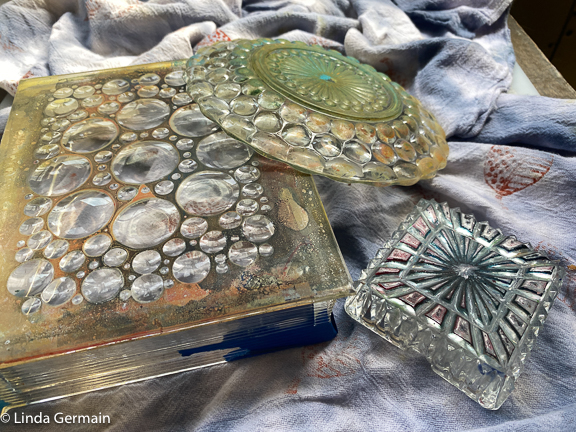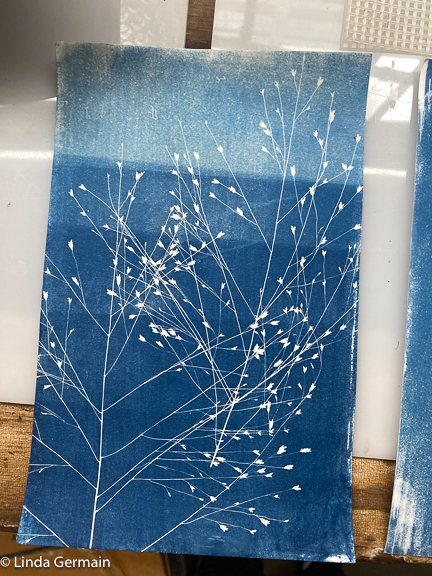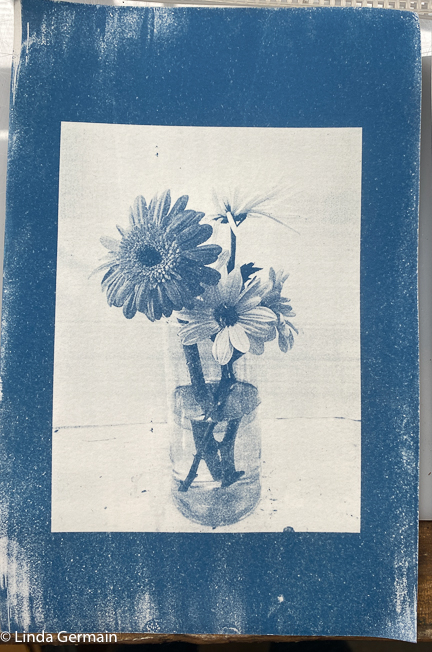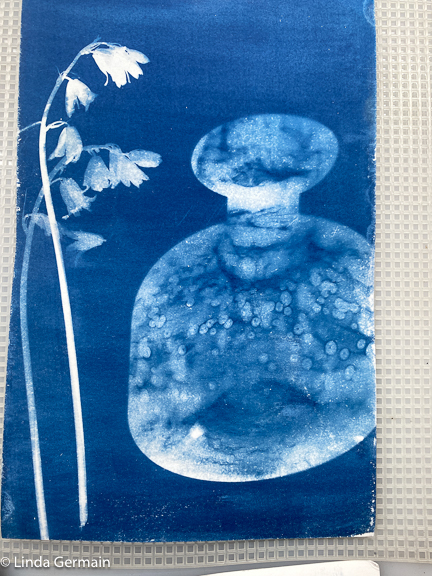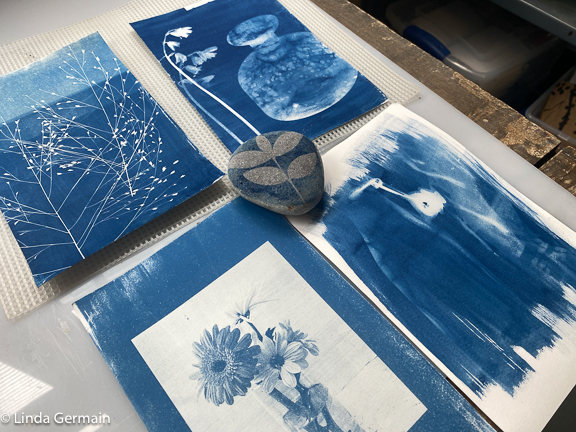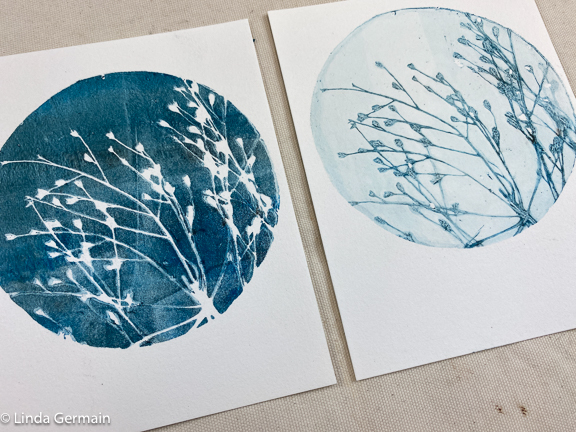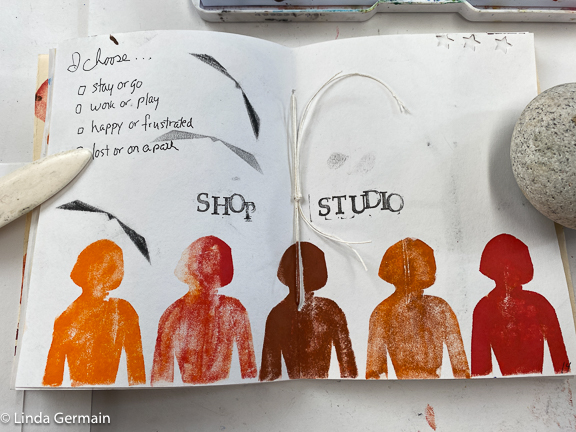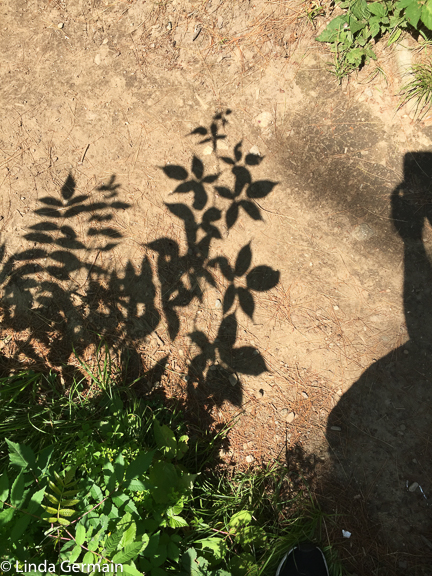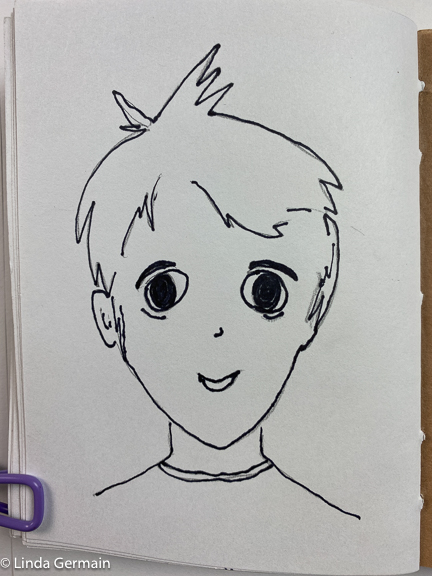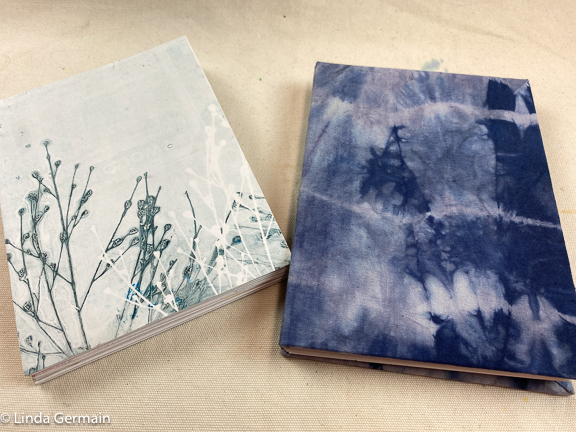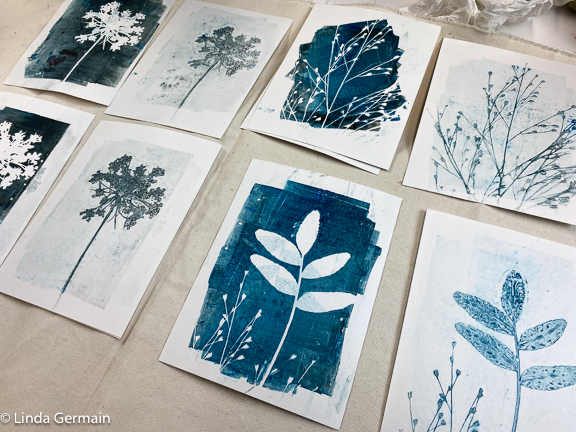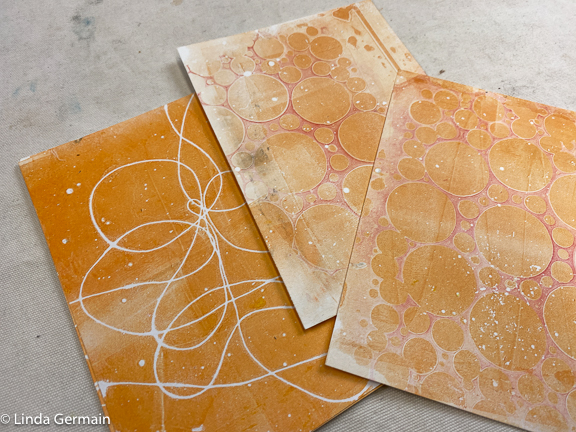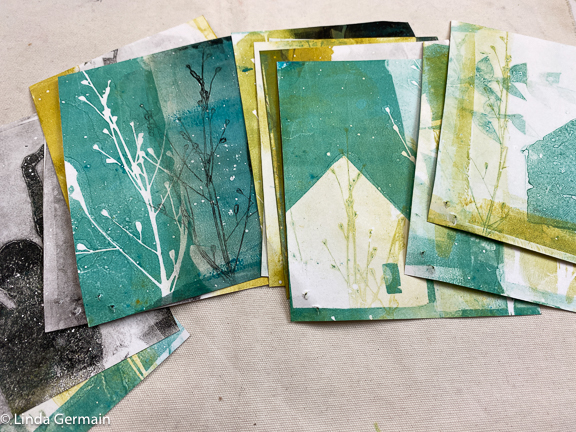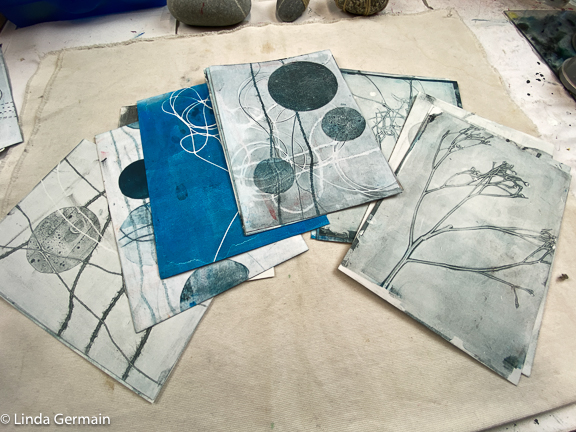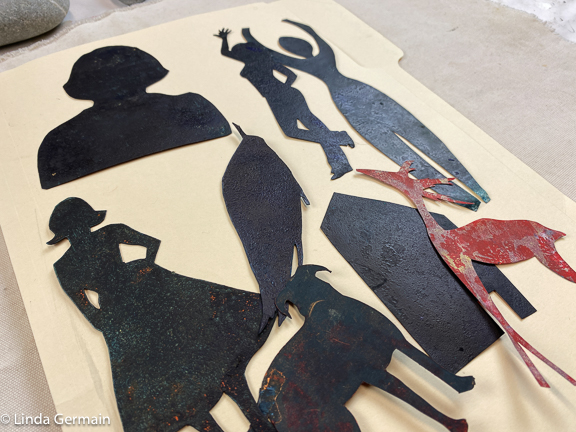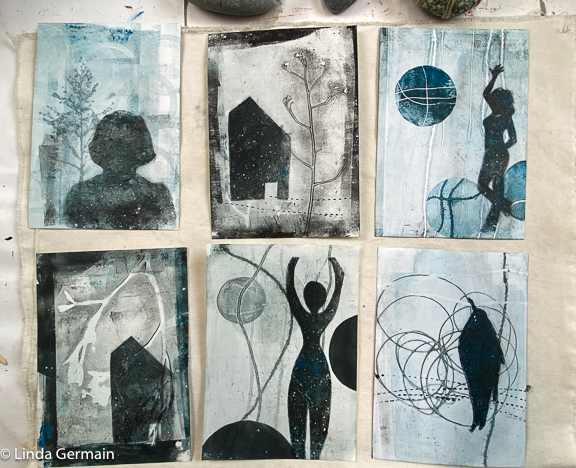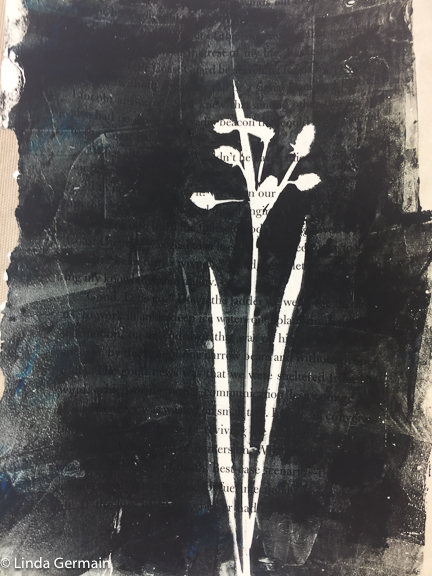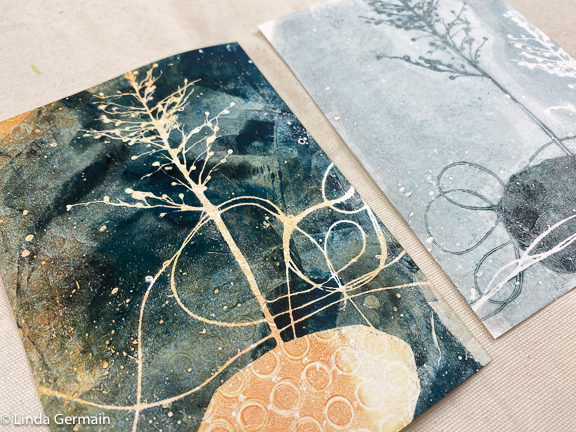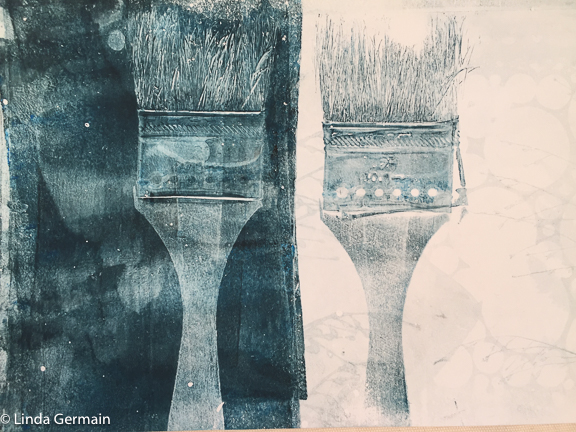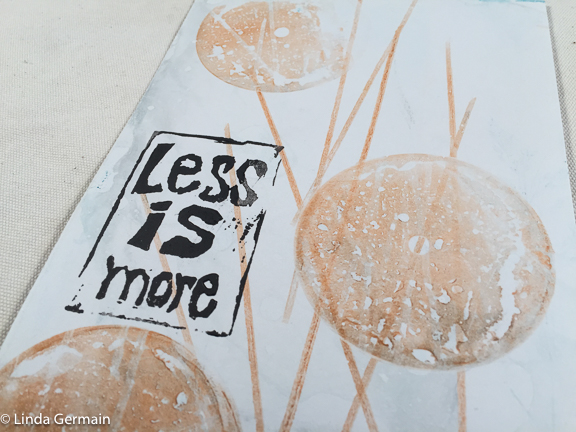Make unique fabric for your projects
I have piles of hand printed fabric. I have actually stopped making more until I use up some of what I already have.
I have made a few quilts and now have more quilts than I can use.
I covered some bricks with hand printed cloth to use as book weights. I do use these quite a bit and I think 6 big book weights is enough for my little studio.
I used heat-n-bond to transform some of the monoprinted fabric into book cloth. The heat-n-bond is applied to the fabric then thin rice paper is stuck to the other side. This creates a barrier so the glue does not seep through the fabric. Then I covered a few artists books.
I love composition notebooks. I covered a few with the hand printed fabric.
I love bags. I am definitely a bag lady. And yet surprisingly I have only stitched up one little shoulder bag. I think a big beach bag may be my next project.
If you are wanting to make some unique hand printed fabric, then check out the workshop, Monoprinted Fabric.
I am offering a 25% discount on this class for the next few weeks. It is a comprehensive class with 12 different techniques for gelatin printing on fabric.
Make unique fabric for your projects Read More »
